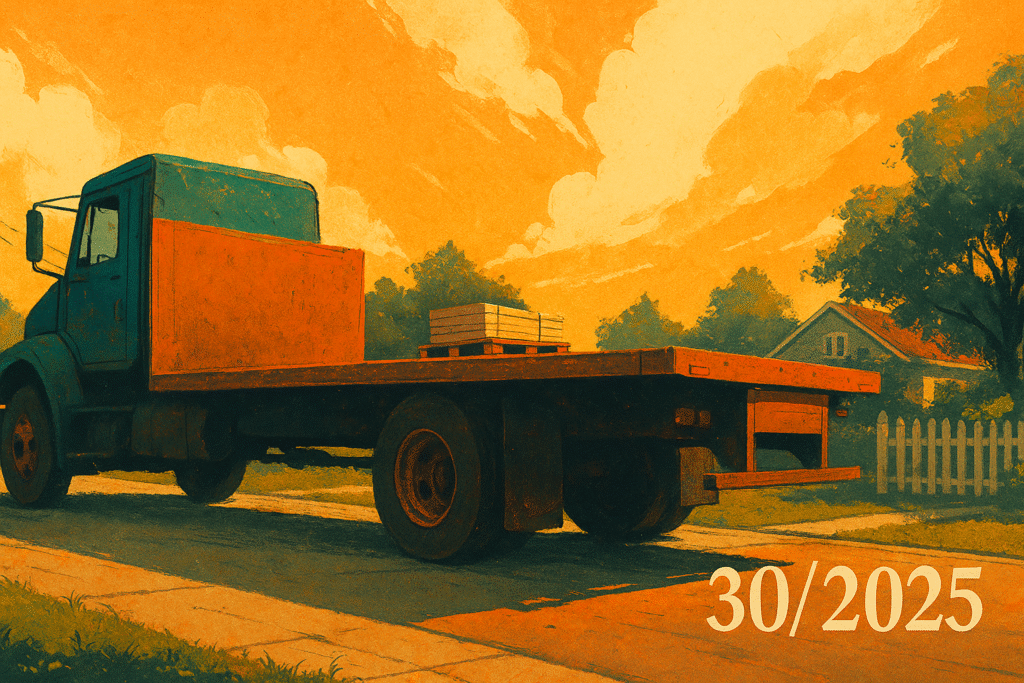
Image © Jose 2025
Watch out what you ask for! We all want a service economy, we want to be served, from home, fast, and to return everything, free. We want to know what’s going on with our orders, want feedback, want acknowledgement. All this comes at a cost.
Tackling one of my projects at home, as always, one that took longer than it would for a pro, but I’m learning on the job. I was leveling an area to build a trash bin spot, we want it close but out of sight, and with the Boston weather, you need to plan for the winter. I decided I was going to cover the wooden structure I built with pressure-treated pine dog-ear fence pickets. Cheap and does the job. My usual go-to place didn’t have it, so I decided to order from a different place. Ordering was easy, maybe I could have tried to go to the store and fit the 25 boards in my car, but I decided to get it delivered since it was cheap. And this is the first bit of math we tend to do: use our time as part of the equation and price ourselves based on what we do for work as professionals in some other domain. So yes, gas and my time were more expensive than this delivery.
I counted. Since the order went through, I received one order confirmation, two delivery confirmations, and 12 text messages with things like confirmation of the address, delivery date, delivery window, “good news” that my order was arriving as expected, that my driver was finishing a job nearby, and then that he had arrived and the order had been delivered. Because I wasn’t responding to these messages, the driver reached out directly saying he was on his way. I told him to respect the speed limits, cops here love to catch visitors speeding. He thanked me.
When he arrived, I waved and he waved back. He parked, and I was close by, waiting for him to do his thing, but he stayed in the cabin for a while, while I was asking myself what he was doing. Then I get a ping saying that my driver was here. I knew that. He finally came out, a nice gentleman, reminded me of Gerald from Clarkson’s Farm, also because there were moments I could not understand his thick local accent. The flatbed truck was huge, and it had two full pallets of the same product – maybe 400 or 500 boards – and for a moment I thought I had made a mistake. Part of me was already thinking: what am I going to do with so much product? The other part: I’d have to pay for someone to come pick it up. But thankfully, that very small pallet in the back of the flatbed was my stuff.
The driver slowly unhooked the Moffett hanging from the back (a forklift that was a total overkill for my pallet), got it running. We chatted while he was doing this. I learned the wood had come from New Hampshire, 50 miles north of my house. He had another delivery and then back home. He loaded and unloaded the pallet where I asked him to. I didn’t want to insult him by tipping, so I offered him a bottle of cold water instead, which he appreciated, hot day. He loaded up the Moffett and before he left, I received another ping telling me my order had been delivered, with a photo, as I was standing in front of it. Then I got the customer satisfaction survey, asking me how the encounter with my driver had gone. I rated the whole thing a 10 (it wanted to know if the driver had asked me to give him a 10 rating…). What else could I say? The folks on the other side will just count me as a happy customer, and I am. Sort of.
For all accounts, this was a successful transaction, but it got me thinking about the service economy we’ve created. It’s true this might be exceptional. I’ve also been in situations where a delivery came with an 8-hour window, requiring me to stay home the entire time. And then—no delivery. No clue where the driver was, no info if it was still going to happen. I’ve had deliveries with no proof, and somehow the stuff disappeared. The whole customer journey is mapped with all use cases, and many of them with everything that can go wrong. Folks (I don’t think these companies employ real service designers, but I could be wrong) sit and map all the touchpoints where people complain. The process, along with notifications, service requirements, and standard operating manuals for all involved, is set up with the worst-case scenario in mind.
With all this, I’m sure stuff still goes wrong. And I’m sure that same day, this driver could get a bad review because he had to drive slowly in my neighborhood and arrived late for his next delivery. Or perhaps because he was too slow going through the entire process. I also know they can’t take every exception into account. They need to set the whole operation up for the hardest situation and highest level of complexity. But I wonder, does this make sense? What is the true cost of such a setup? And who exactly is paying for all this? And how?
Meanwhile, the rain kicked in before I could finish my project. And I left wondering, did I really need this delivered this weekend.
Comments
Powered by WP LinkPress